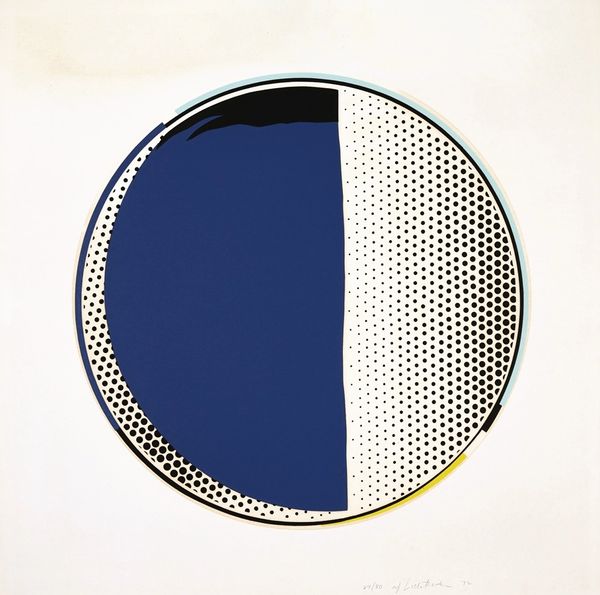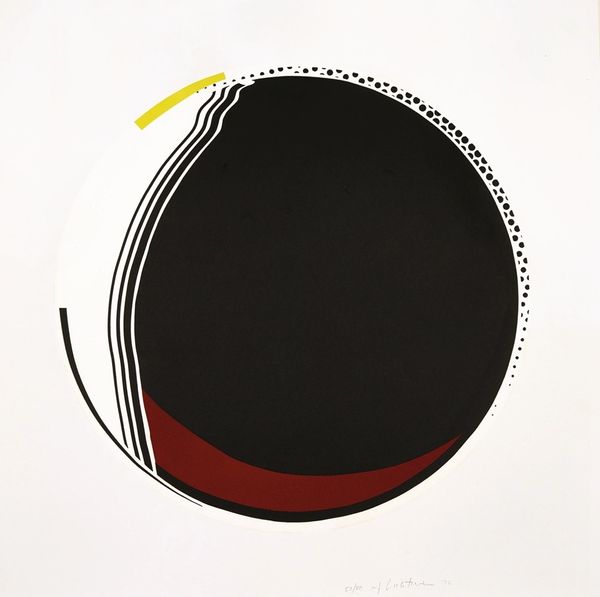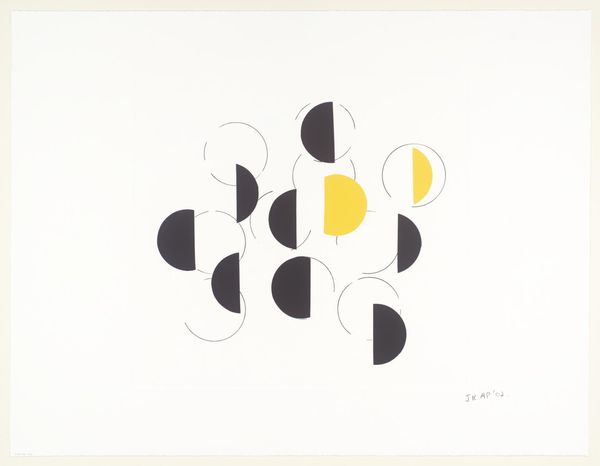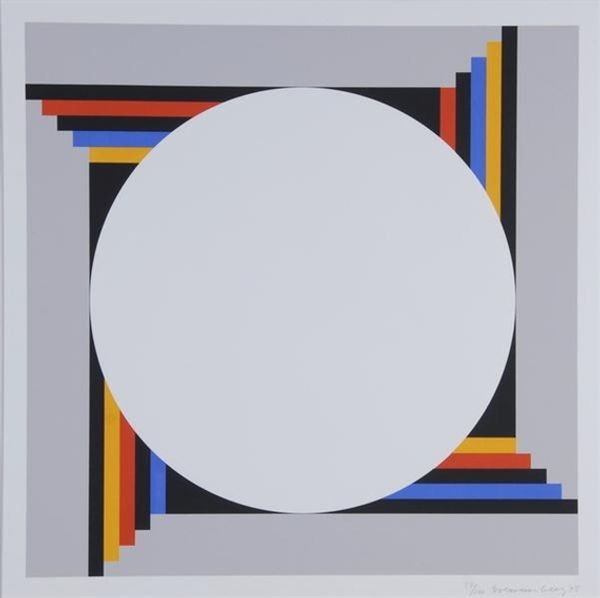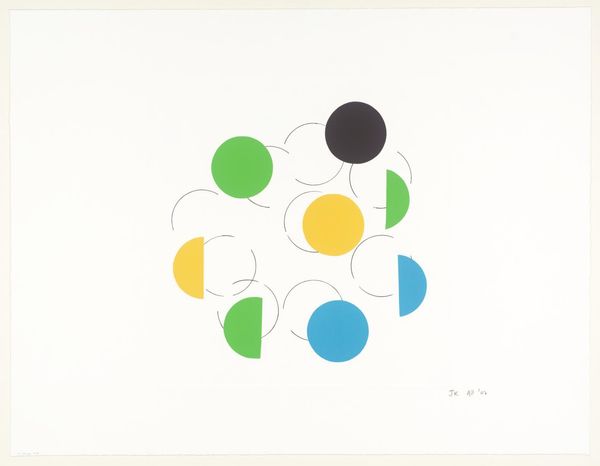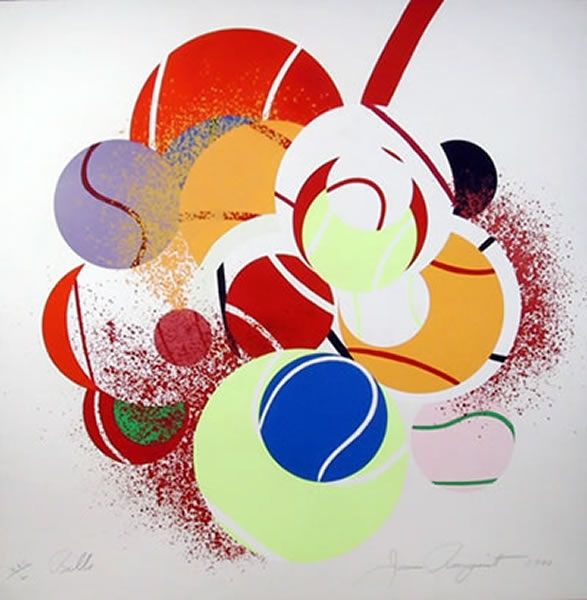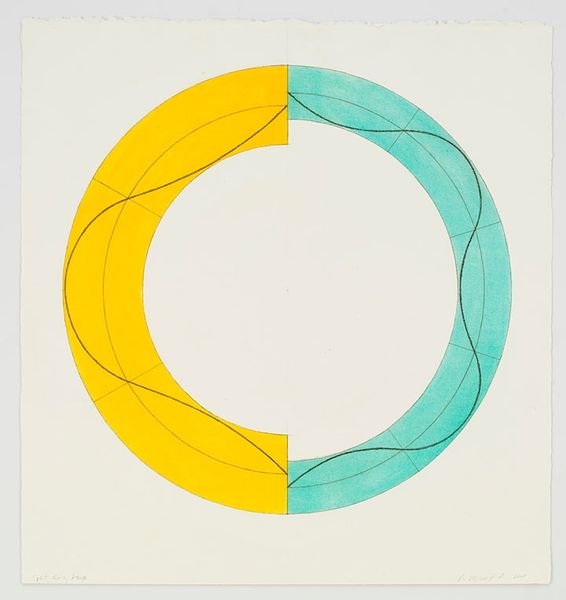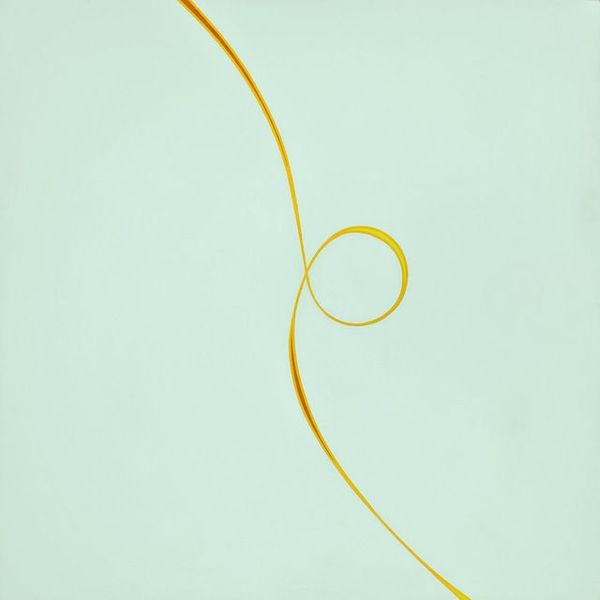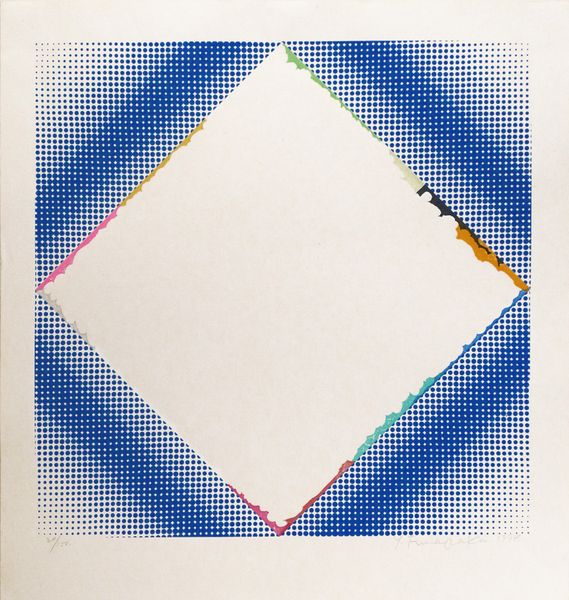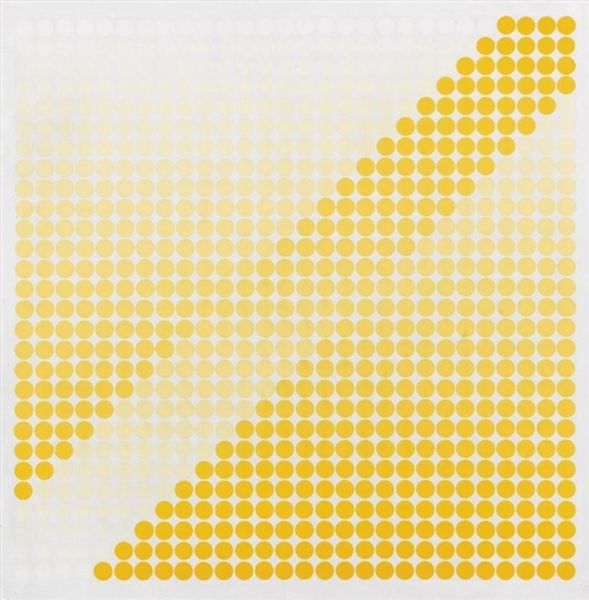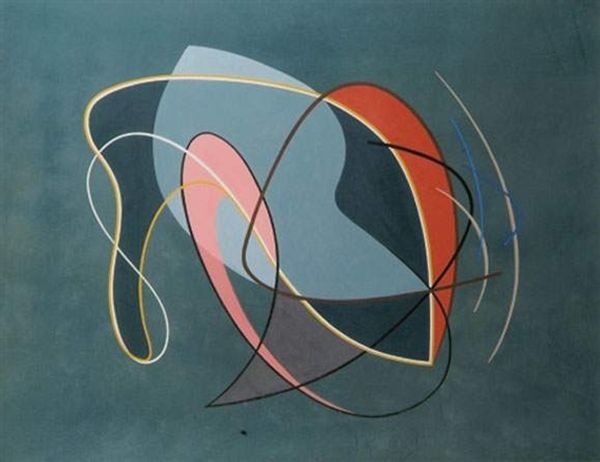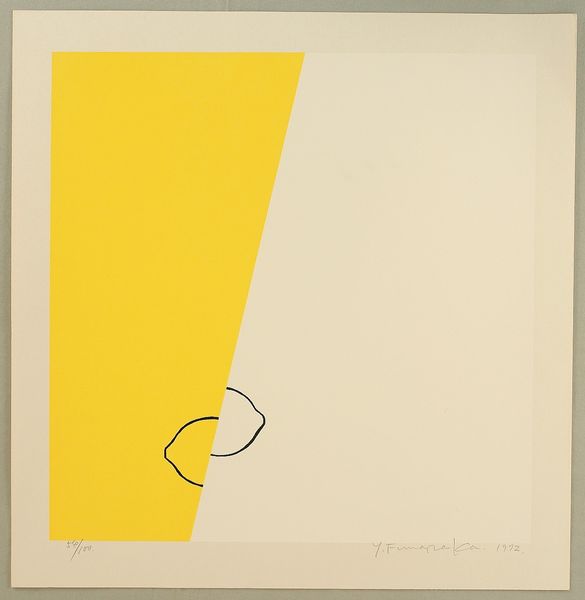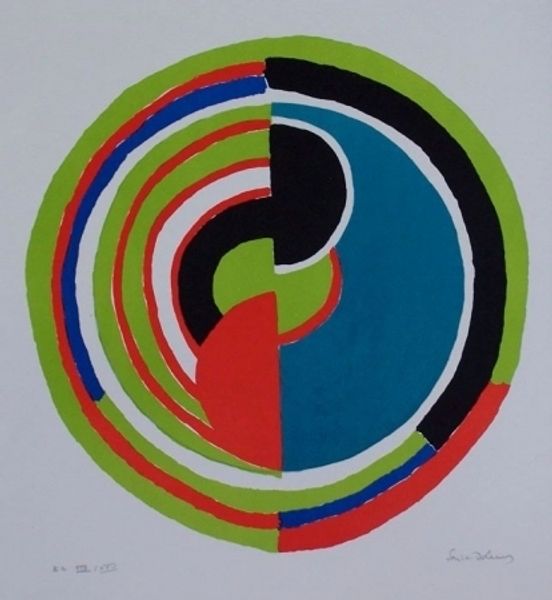
Copyright: Modern Artists: Artvee
Curator: Here we have Roy Lichtenstein's "Mirror #2," created in 1972 with acrylic paint. Editor: It’s stark. The interplay between the flat planes and the suggestion of depth with those dots... it's like a minimalist Op Art piece. Cold, yet engaging. Curator: The 'Mirror' series arrives at a fascinating point in Lichtenstein's career. Post his direct appropriations of comics, we see him grappling with abstraction and representation in relation to Pop Art’s critical project. It’s far from a straightforward read. Editor: Indeed. A mirror is such a potent symbol – reflection, self-awareness, vanity – and he reduces it to… this. What strikes me are the fragmented coloured lines. Are those mere decoration, or coded indications, signifying different types of reflections maybe? Curator: Well, that's what intrigues me. A mirror implies a surface, but also an encounter with the self and a potentially distorted vision. The hard-edged shapes disrupt the mirroring process and thus, what constitutes "reality" becomes further challenged within the societal constructs in the late 20th century. Editor: Those Ben-Day dots... He uses them not to mimic a printing process, but almost as a field of visual noise, right? Subverting the mirror metaphor by disrupting a clear image. There's always this ambiguity with Lichtenstein between reproduction and the aura of uniqueness. Curator: Absolutely. Considering contemporaneous feminist art theory and politics, which debated idealized beauty, there may be no face present to gaze into it! It becomes an examination of how representation, including self-representation through mirrored image, is an impossible act when caught in structural gendered bias. Editor: Right. Almost as though Lichtenstein hints that the perfect image, the ideal self we search for, is always an incomplete construction. What this evokes is cultural anxiety that persists through art and imagery. Curator: Yes. The abstraction in the visual representation hints at those underlying complexities of the self and visual representation, making it resonate well beyond the immediate context of Pop Art. Editor: A deconstructed reflection of culture and its inherent flaws—it definitely shifts my understanding. I’m taking with me the subversion of iconic imagery. Curator: Agreed. There's a surprising depth that this offers and invites us to engage and investigate on many levels.
Comments
No comments
Be the first to comment and join the conversation on the ultimate creative platform.
